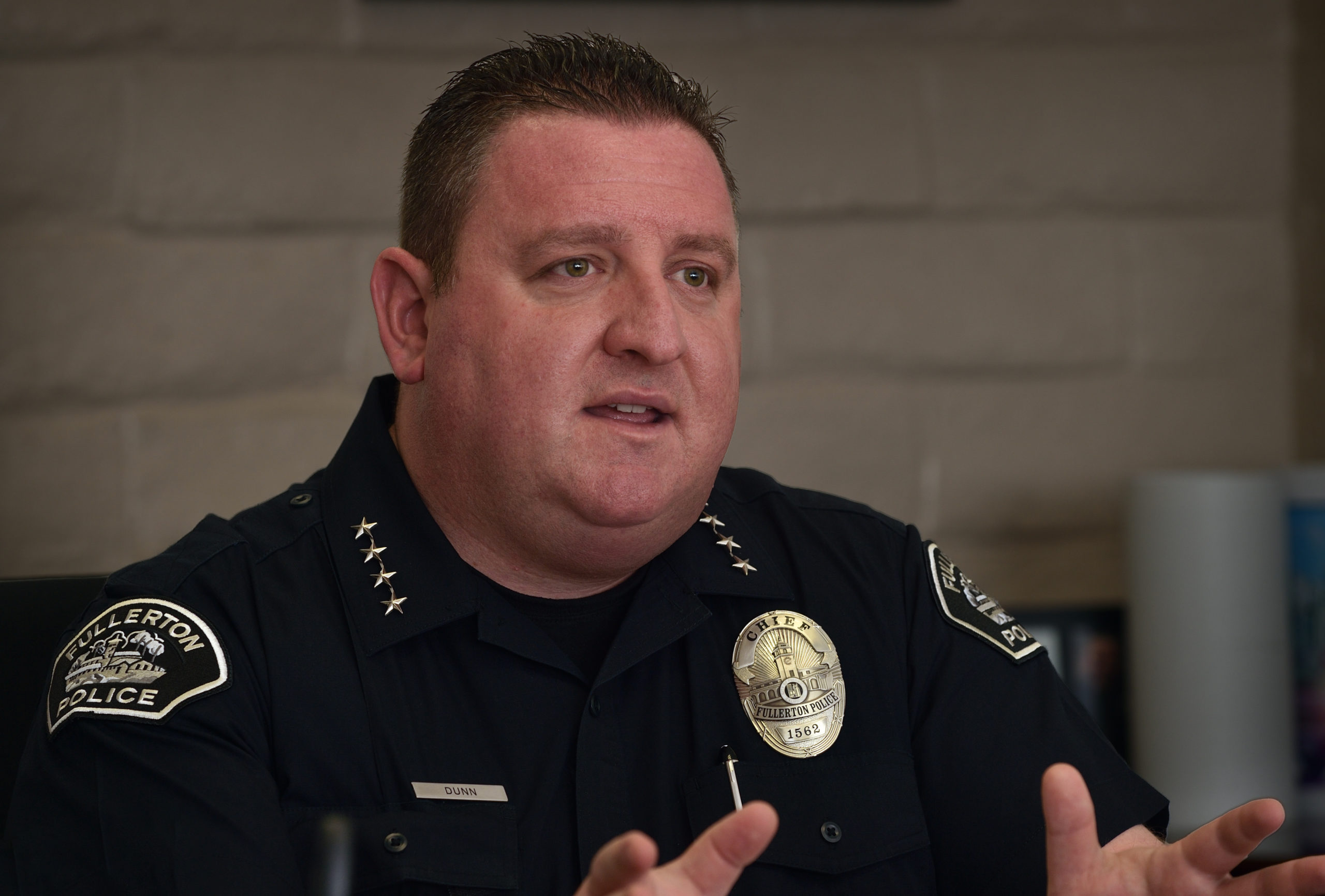For more than a decade, Fullerton Police Department has continuously innovated and built upon its service-first, enforcement-as-a-last resort approach to homelessness.
The agency was the first to employ a homeless liaison officer, the first to require crisis intervention training and the first to pair a mental health clinician with officers, offering a variety of services to homeless individuals.
Fullerton PD was an inaugural member of the North Orange County (NOC) Public Safety Task Force that
· Address homeless outreach and intervention efforts;
· Youth violence prevention and intervention in K-12 schools and;
· Enhance the successful reentry of formerly incarcerated individuals into the community
It’s here, with the collaboration of neighboring police departments and community based organizations , that Fullerton Police Chief Robert Dunn began to see the magic of what can happen when resources are coordinated and pooled together and more importantly, police officers are given the proper tools to serve the community.

Fullerton Police Chief Robert Dunn talks about the homeless task force.
Photo by Steven Georges/Behind the Badge
“In the last few years, we have been able to enhance services for the estimated 300 homeless individuals inhabiting the city,” said Chief Dunn. “Homelessness is not a crime but there are some areas that cross over and (the police) are the first to be tasked with handling those service calls.”
Funding for the North Orange County Public Safety Task Force is provided by Assembly Bill 97.
Signed by the governor in 2017, AB97 allocates $20 million to be distributed amongst the 10 member cities and 40 plus community-based organizations over a four-year period.
Along with Fullerton, cities making up the Task Force include Anaheim, Brea, Buena Park, Cypress, La Habra, La Palma, Placentia, Stanton, and Yorba Linda.
In addressing homelessness, Fullerton used part of its funding allotment to contract with City Net, an organization which connects our homeless neighbors with mental health and shelter services.
“When I came on board it was something that I felt passionate about because when you talk about those three areas, these are areas that police are often called on to try to make an impact,” Dunn said.
In the past, City Net providers would ride along with Fullerton’s homeless liaison officers two or three days per week, Dunn said.
But with funding from the Task Force, City Net providers outreach five days per week and are on call during the weekends.
“Especially today, with the budget constrictions stemming from COVID, I wouldn’t be able to afford outreach by a third-party vendor if I didn’t have the funding,” Dunn said. “The general goal of law enforcement isn’t to arrest our way out of homelessness, it is to provide services and get people on a path to success whatever that looks like for them.”
Task Force partners include multiple nonprofits and community-based organizations which provide services to homeless individuals.
Funding from the Task Force has also gone to the development of the Outreach Grid application, which enables Task Force members to collaborate on homeless information through one unified data platform.
The app allows homeless liaison officers and outreach workers to document every contact with a homeless individual as well as check for the availability of shelters and other services.
The app can also alert officers and outreach workers when a shelter bed becomes available and whether the homeless individual meets the criteria required by the shelter.
“What we have found in our experience in dealing with homeless individuals, is that there is often impediments to them finding a way off the street,” Dunn said. “You are basically succinctly capturing all of our contacts with and individual, all of our outreach efforts and then marrying them with the resources available when they are available,” Dunn said. “For me, the ability to have this information and access it when you’ve made the connection with one of our homeless neighbors is key to our success in the struggle to help our homeless neighbors.”
A few years ago, the Task Force also conducted a census of the homeless, collecting demographic data on people experiencing homelessness in North Orange County so that the data summary navigates the resource decisions often made without such pertinent and important information.
Funding from the Task Force will end in June and member cities and community-based partners will need to take creative measures to garner funding and keep the Task Force going.
Dunn hopes to keep the same partner cities of the Task Force together and perhaps add new partners.
They may write grants and are planning to use existing vacant buildings as a hub from which to provide services.
“Fullerton wants to lead the way in a collaborative model that continues the efforts of the Task Force, beyond the current funding or at a greater level including adding partners that were not part of the original group, such as a our medical partners,” Chief Dunn said. “All of us have enjoyed positive and promising developments as a result of the Task Force and we know we want that to keep going.”
 Behind the Badge
Behind the Badge



